Granicus | Strategic Discovery: Foster Care Agency
Role: Project Lead for state foster care agency | Granicus Experience Group
Responsibility: Conduct UX research as part of strategic discovery process to inform a new communications plan and create a Strategic Blueprint for state foster care agency
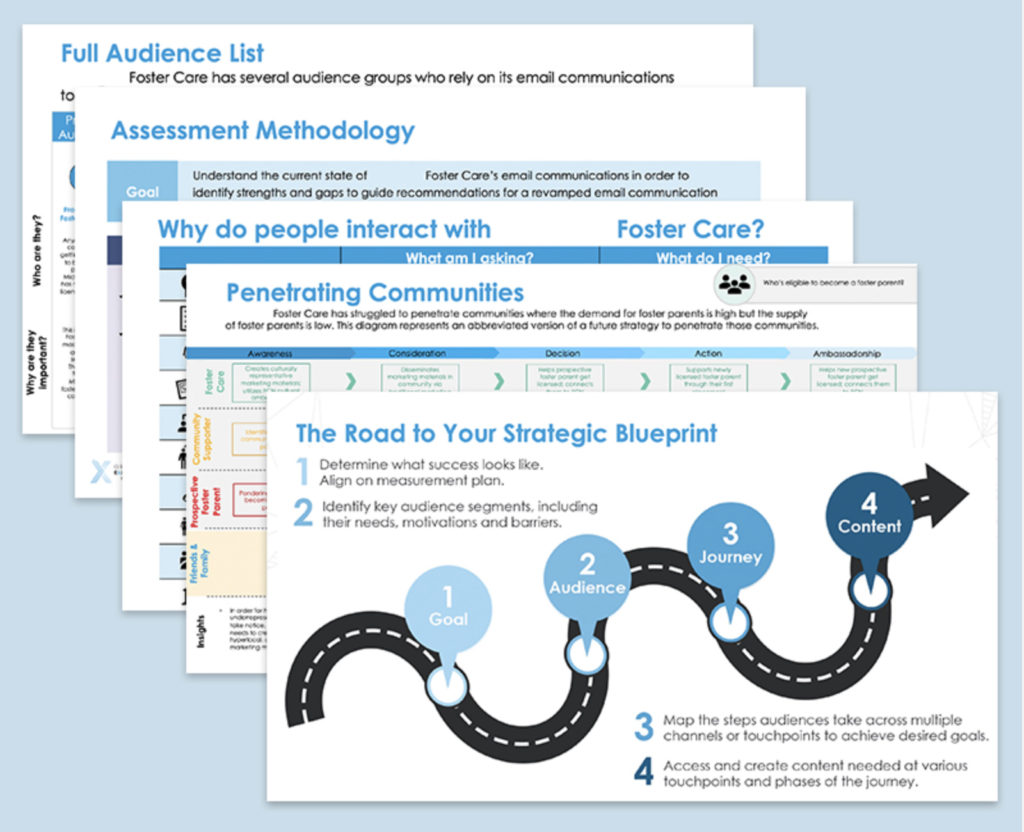
Background:
- This foster care agency has been a client of Granicus Experience Group (GXG) for over 6 years (one of the oldest and most loyal clients of the more newly formed GXG)
- GXG had previously served this foster care agency by creating email & SMS communication campaigns through Granicus digital communications product
- In this year’s contract, GXG has promised in addition to campaign management, we would also create a strategic blueprint that would guide this foster care agency’s communications both this year and into the future
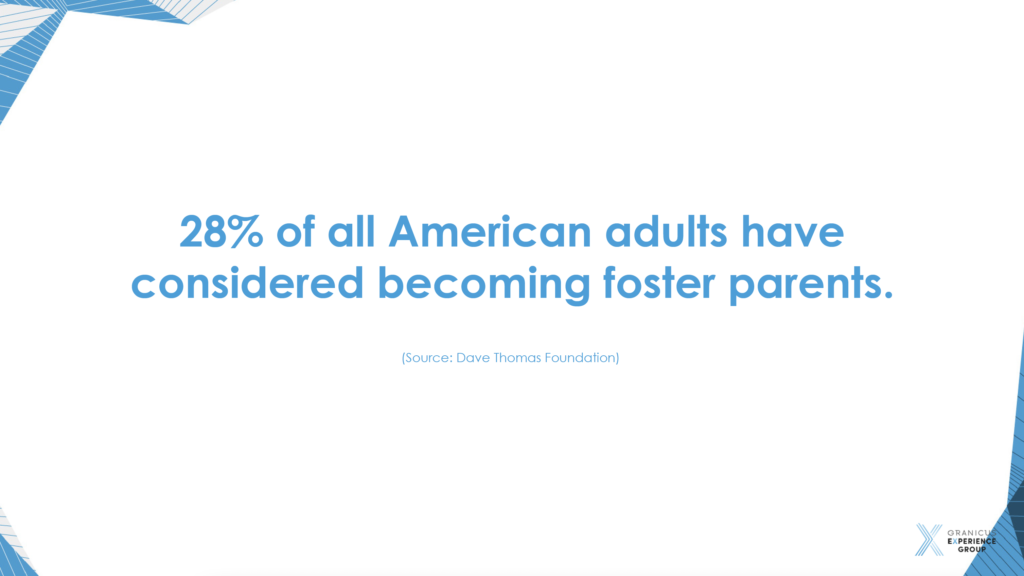
Objectives:
- Create strategic discovery and UX research plan that will assess effectiveness of current communications
- Deliver strategic deliverables including Key Findings Report and Strategic Blueprint that will guide future communications initiatives & priorities
- Use research findings to design communications plan that will be accomplished within this year’s PoP (Period of Performance: 1 year)
- Breakdown additional findings into initiatives that can be implemented further in the future
Key Deliverables:
- Discovery Workshop
- Audience Survey
- Stakeholder Interviews
- Key Findings Report
- Strategic Blueprint
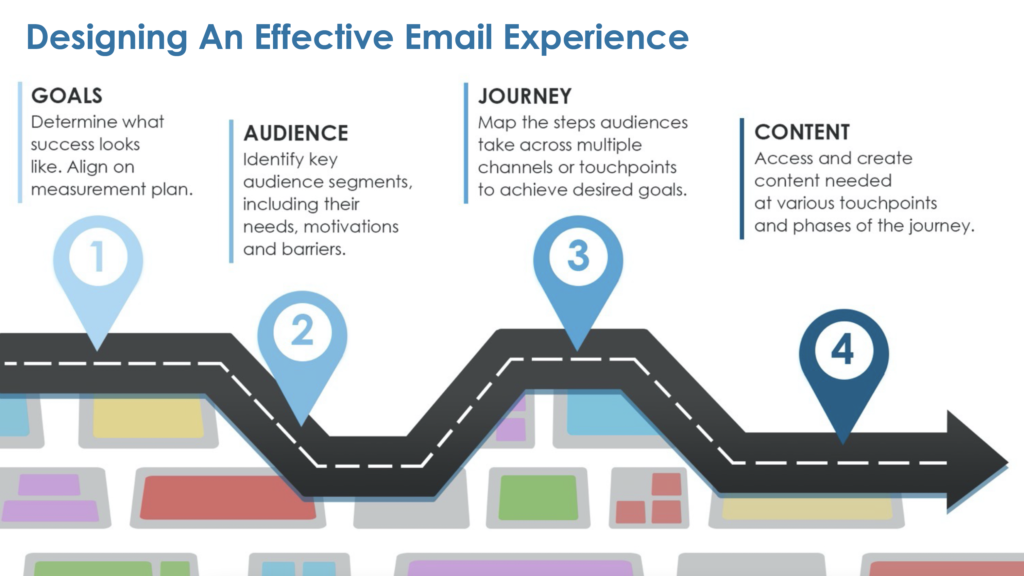
Discovery Workshop:
The first step in our UX research efforts was completing a discovery workshop with our partners at the foster care agency. Our goals for this first initiative were to:
- Outline the process for creating a Strategic Blueprint
- Align on goals and objectives for the agency and their communications
- Begin to develop key audience segments and relevant journeys
In this workshop, our key takeaways were aligning on the primary goals and key audiences to focus on:
- Primary goals: Dispelling myths around being a foster parent and foster care in general, and connect potential foster parents with Navigators (guides for foster parents to provide support through licensing and fostering).
- Key audiences: Families of color, people who know they want to foster but don’t know where to start, people currently fostering, families living in most common zip codes that children in need of foster care come from, and people who work with children (teachers, coaches, healthcare workers, etc.).
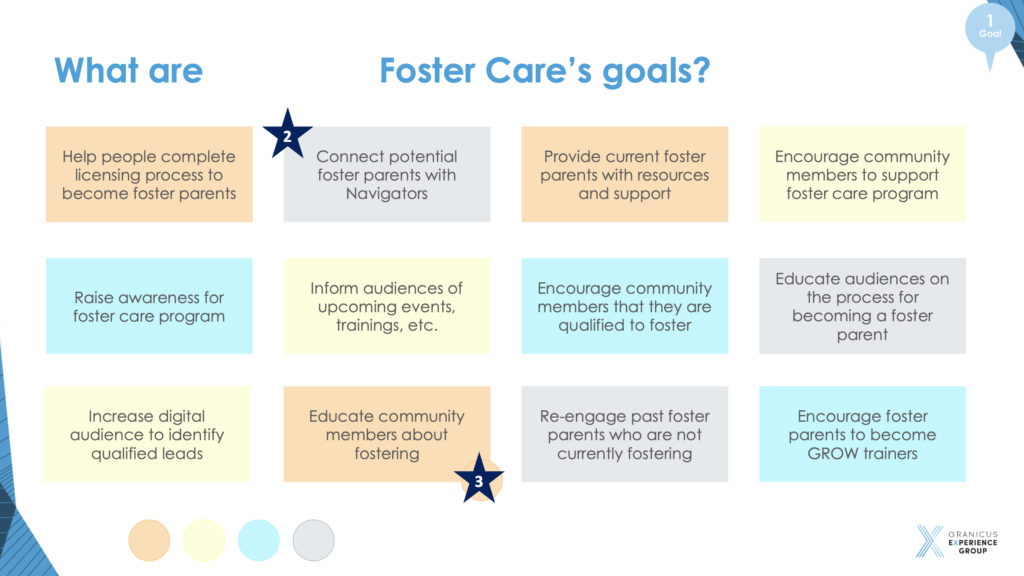
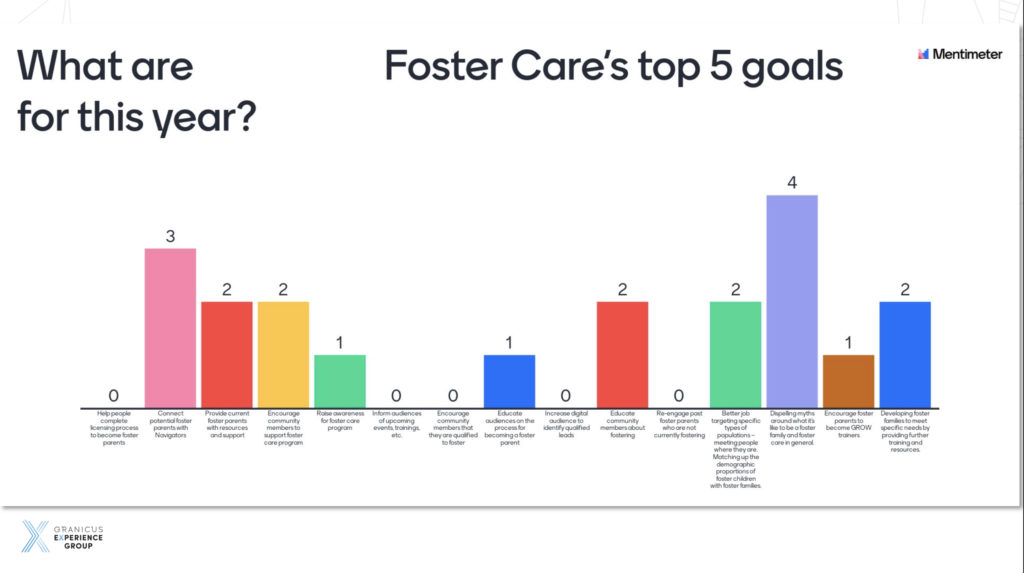
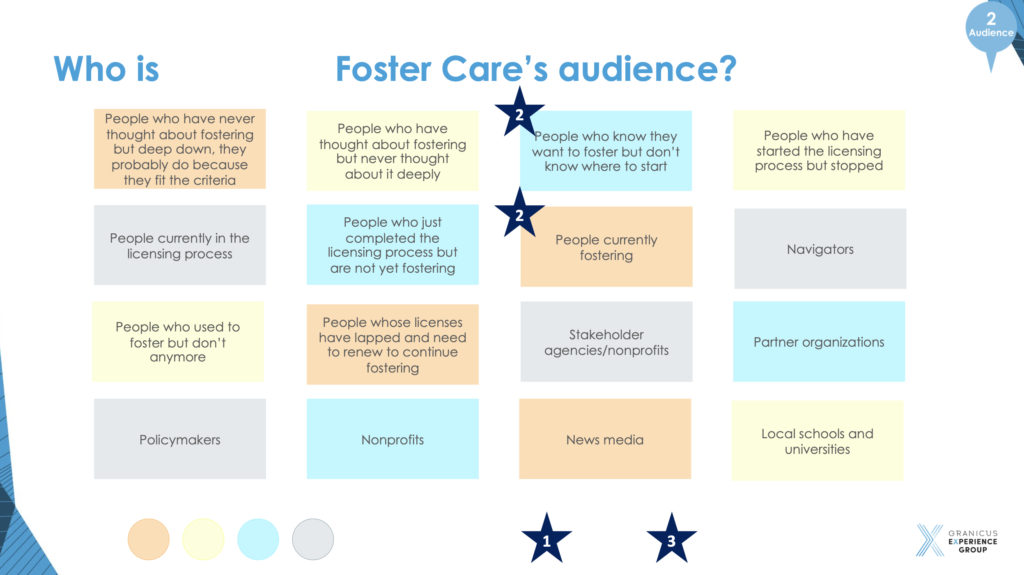
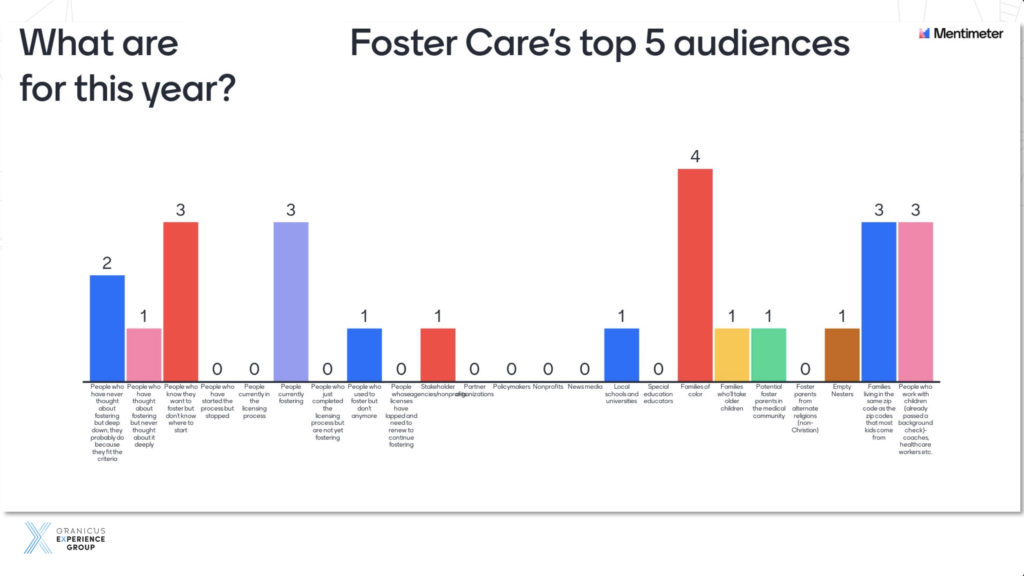
Audience Survey:
The audience survey was designed to give us a large pool of both quantitative and qualitative data from our email & SMS subscribers and audiences who interact with the foster care agency on social media. This UX research method gave us so much pertinent information around many types of audiences perspectives on the foster care agency’s communications, understanding of the licensure process, interests and considerations around fostering, challenges they’ve experienced with fostering, and much more. Some of the key takeaways from this research are outlined in the graphic below, but also include:
- Only a slim majority of our audience has heard of the Navigators program (a key guide in the fostering process that helps prospective foster parents get licensed and supports parents during fostering)
- Almost half of our audience says that the licensure process is ‘somewhat difficult’ or ‘very difficult’
- Only half of our audience says that they believe fostering is a mostly positive experience
- There were a number of helpful resources requested in the free field portion of our survey, including: LGBTQ+ friendly information, where to start in process of becoming a foster parent, how to prepare for the day-to-day expectations/responsibilities of being a foster parent, etc.
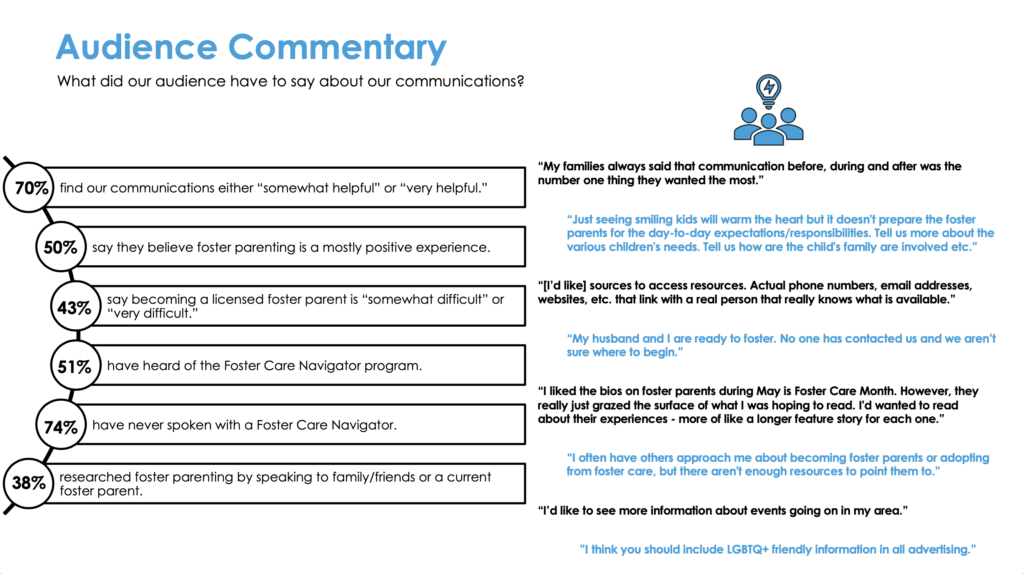
Stakeholder Interviews:
We conducted a series of stakeholder interviews to understand the perspective of many different audience’s personal experiences with the foster care agency. These interviews included both internal and external stakeholders and were identified by our audience survey. The stakeholder participants included:
Internal to the foster care agency:
- Foster & Adoptive Parent Recruitment, Support and Development Manager
- Foster Care Navigator and Coordinator for Native American Outreach
External from the foster care agency:
- Currently licensed foster parents
- A woman currently in the process of getting licensed
- A formerly licensed foster parent/adoptive parent
- Prospective foster parents need encouragement and guidance on how to move forward from consideration to licensure once they’ve decided to become foster parents
- The licensure process is described as confusing, difficult, and time-consuming
- There are many different reasons why current and previous foster parents started fostering
- Myths around the experience of fostering, the requirements to foster, and foster care in general often prevent or make people more hesitant to becoming foster parents
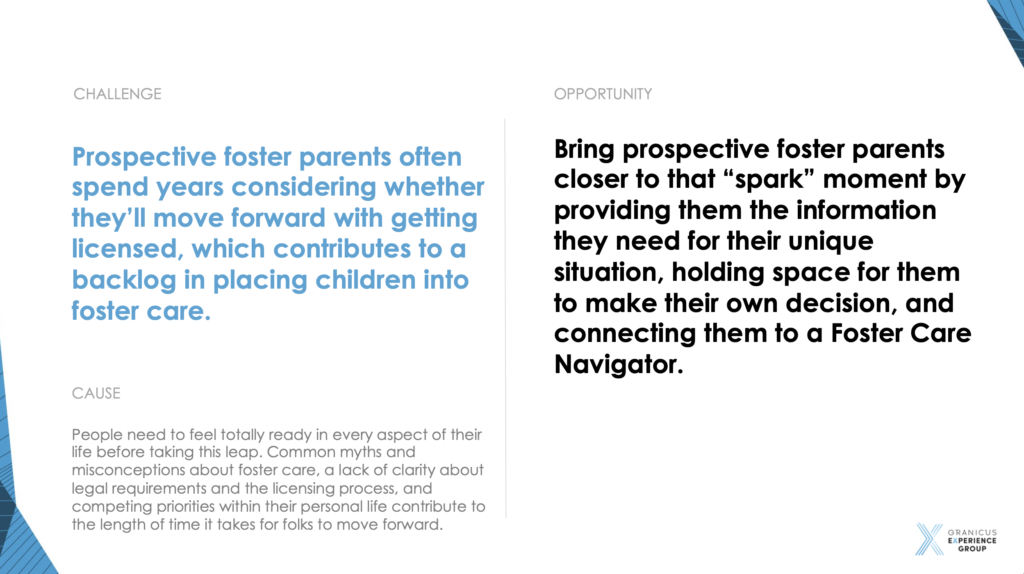
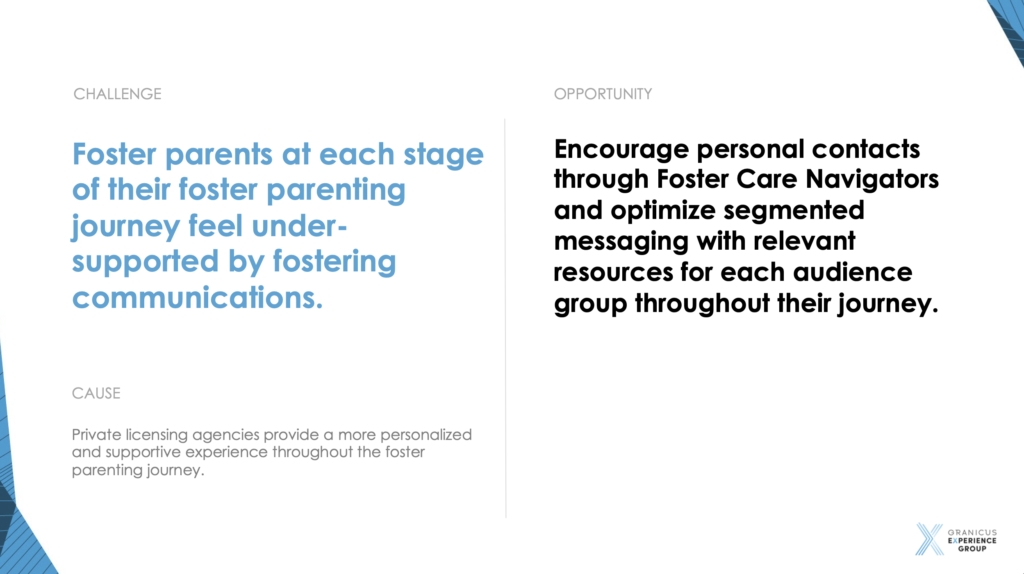
Key Findings Report:
From all of our research methods outlined below, we developed our Key Findings Report:
- Discovery Workshop
- Audience Survey
- Stakeholder Interviews
- govDelivery account audit
- Google Analytics audit
- Social media account audit
- Re-engagement campaign
- Weekly status meeting
- Secondary research
- Why we’re talking to people?
- Who we’re talking to?
- What we’re saying?
- How it’s working?
- What’s next?
- Problem Statement: How do we get the people thinking about becoming a foster parent to actually become a licensed foster parent?
- Solution: GET people who feel a calling to become a foster parent WHO are hesitant to move forward with getting licensed TO contact a Foster Care Navigator BY conveying the reality behind foster parenting requirements and what it’s like to be a foster parent
- Primary goals for PoP: Create more personalized experiences. Use human-centric community outreach, messaging and storytelling. Clarify user confusion along their journey.
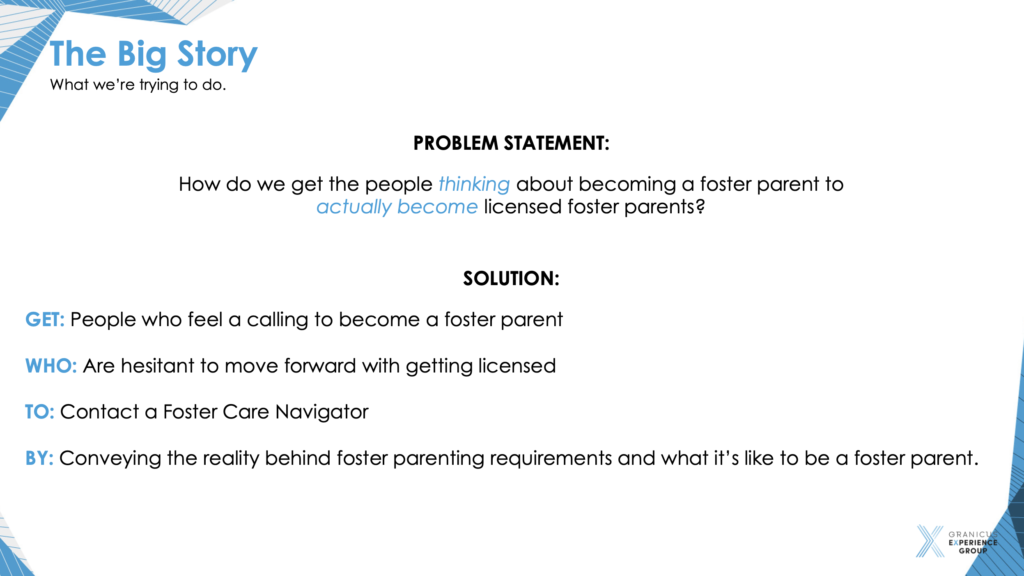
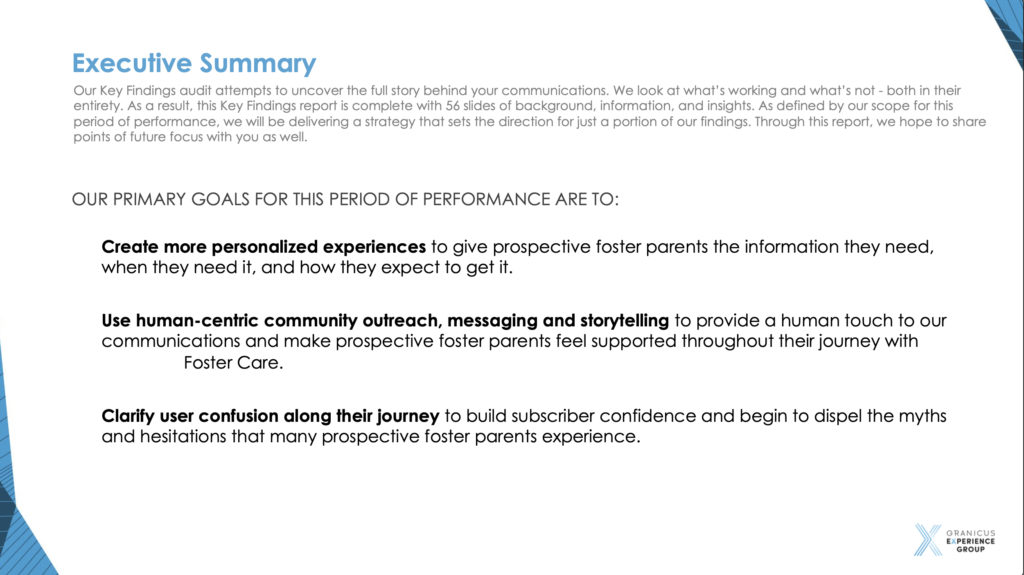
Strategic Blueprint:
The final step in our process was to create the Strategic Blueprint that would serve as a guide for our clients to understand:
- Goals: Know why you’re talking to people
- Audience & Journey: Know who you’re talking to
- Content: Know what you’re saying

1. Goals: Know why you’re talking to people
From the primary communications goals outlined for this PoP identified in the Key Findings Report, we broke these down into what objectives we could incorporate to meet these goals and defined success metrics for each of the goals identified.
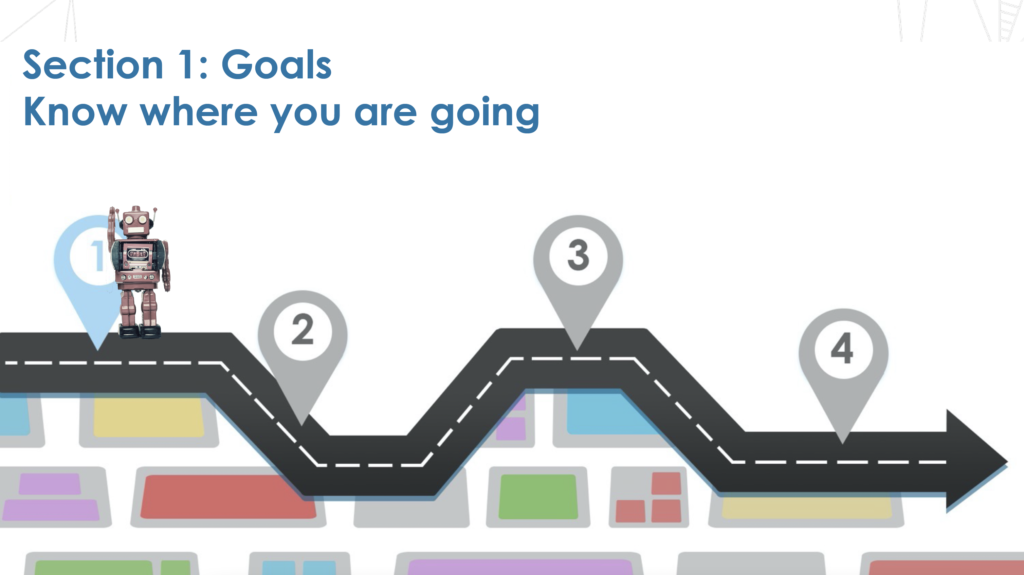
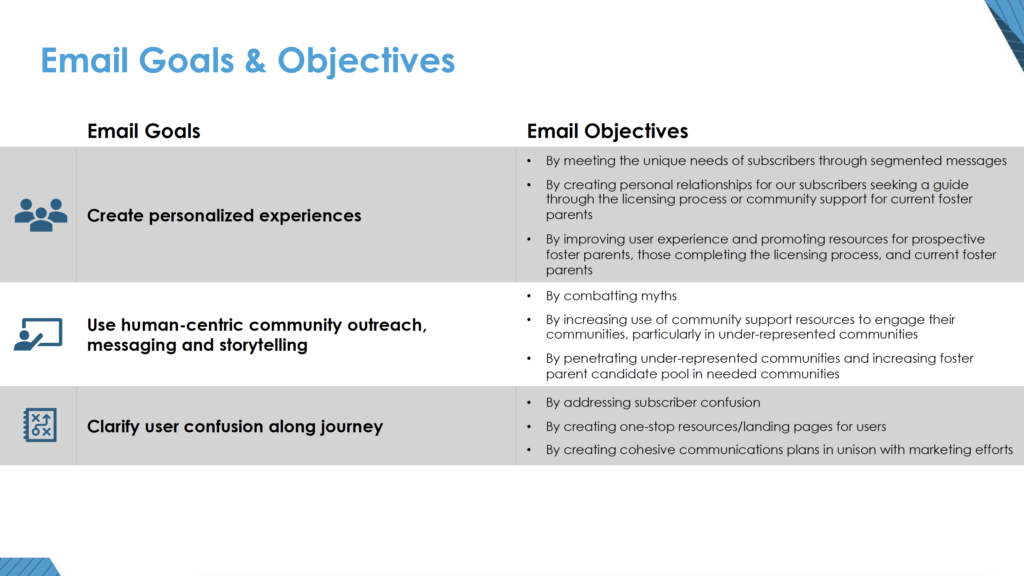
2. Audience & Journey: Know who you’re talking to
We aligned on one primary audience group, prospective foster parents, to focus on and created visualizations that outlined this audience’s persona, user journey, and messaging framework.
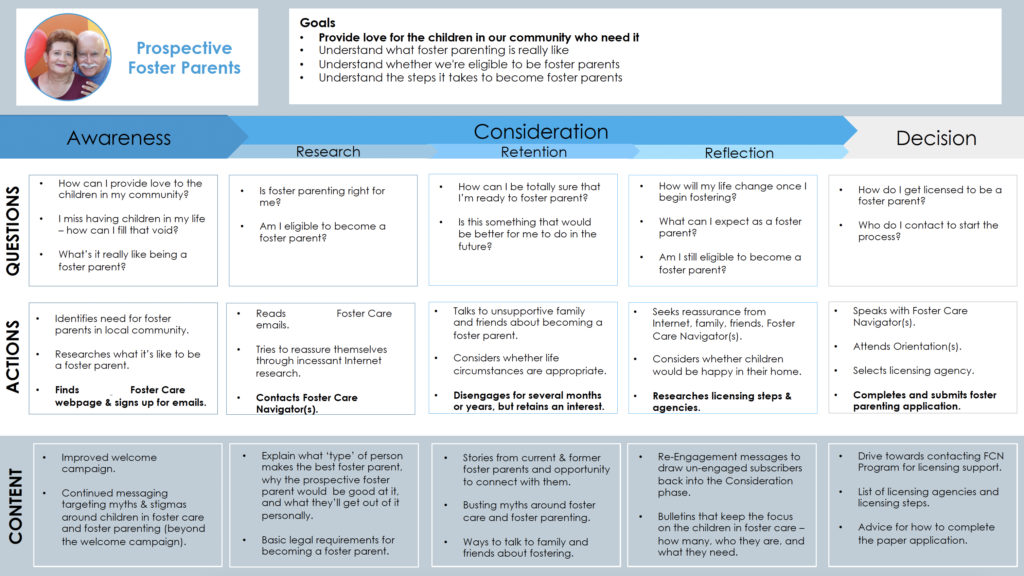
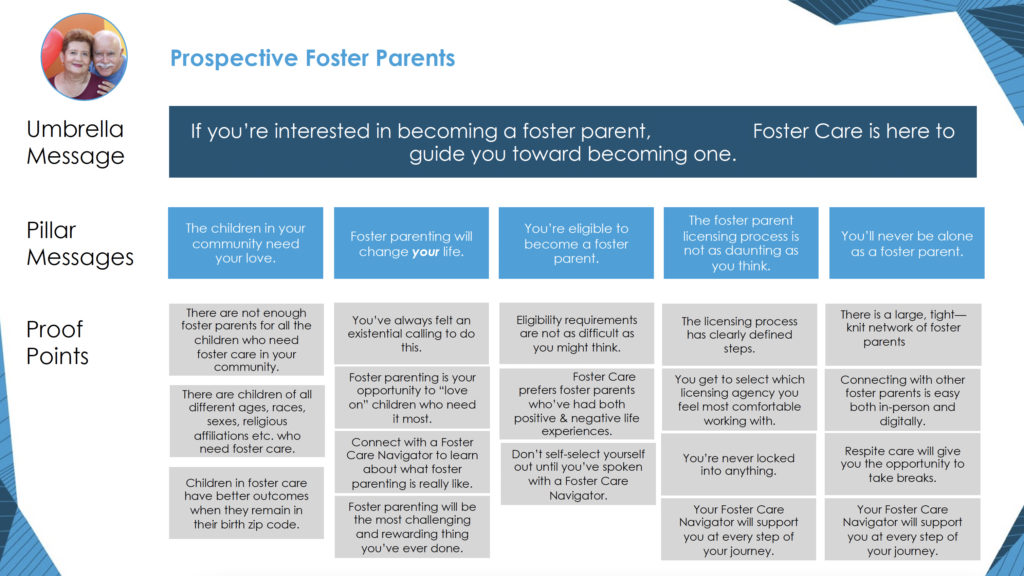
3. Content: Know what you’re saying
Finally we explored how our communications can better speak to the needs of our primary audience(s) through optimization plans for subscriber capture, sign-up flow, segmentation, and campaigns for this PoP.
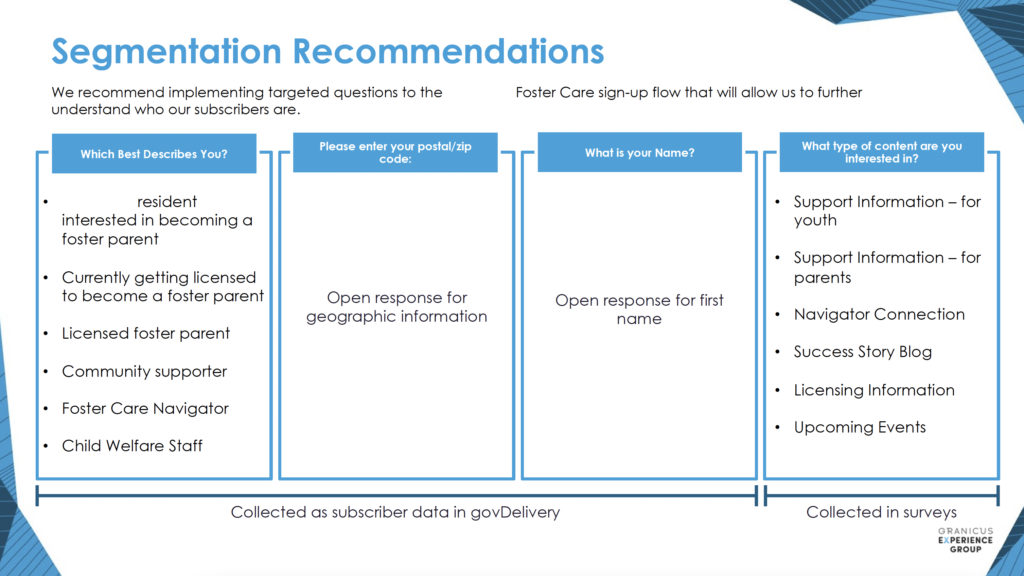
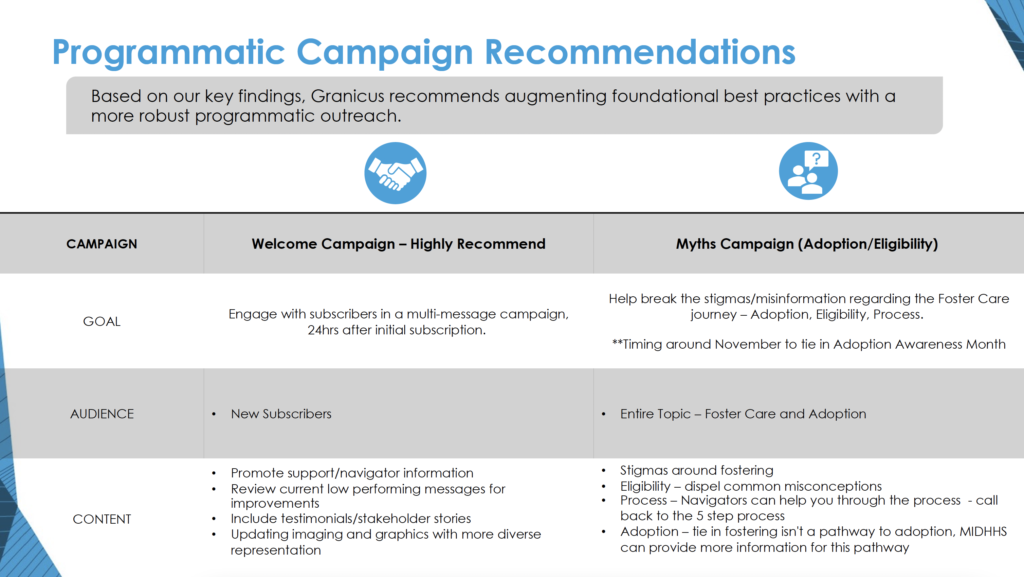
Conclusion:
At the end of this process, we identified the key initiatives to begin implementing these strategic insights into our PoP and identified future opportunities for optimizations and further discovery and research to be implemented. By the end of this PoP, our team accomplished the following:
- Created campaigns that more effectively spoke to the needs and confusions of our primary audiences
- Implemented subscriber capture and segmentation methods that allowed us to identify our subscribers by audience segments
- Used these segments to personalize our communications to an audience’s specific journey
- Better included representation and information on diversity in our communications to combat myths and encourage diversity in fostering
- Increased engagement in our communications
- Identified innovative ways of outreach beyond communications campaigns for future implementation, including partnerships, collaboration with marketing, etc.
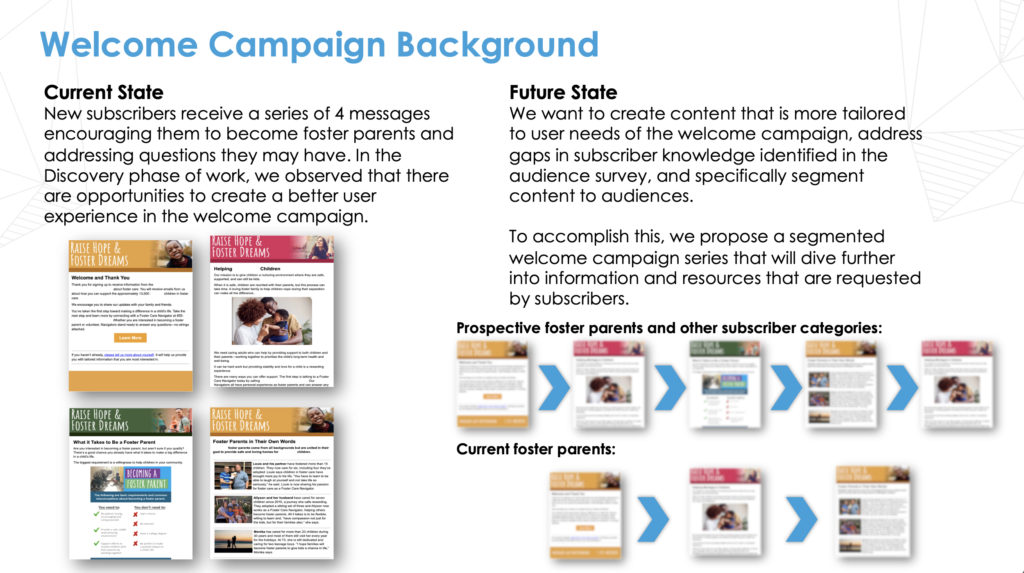
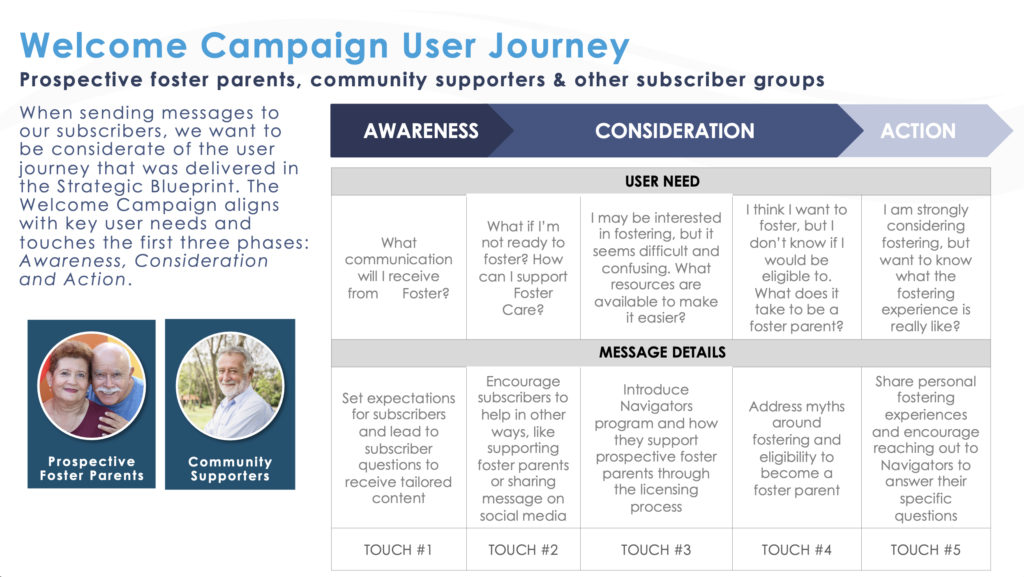
Digital Strategist: Greg Lepore
Program Manager: James Sanborn
Communications Coordinator: Kate Harrison

